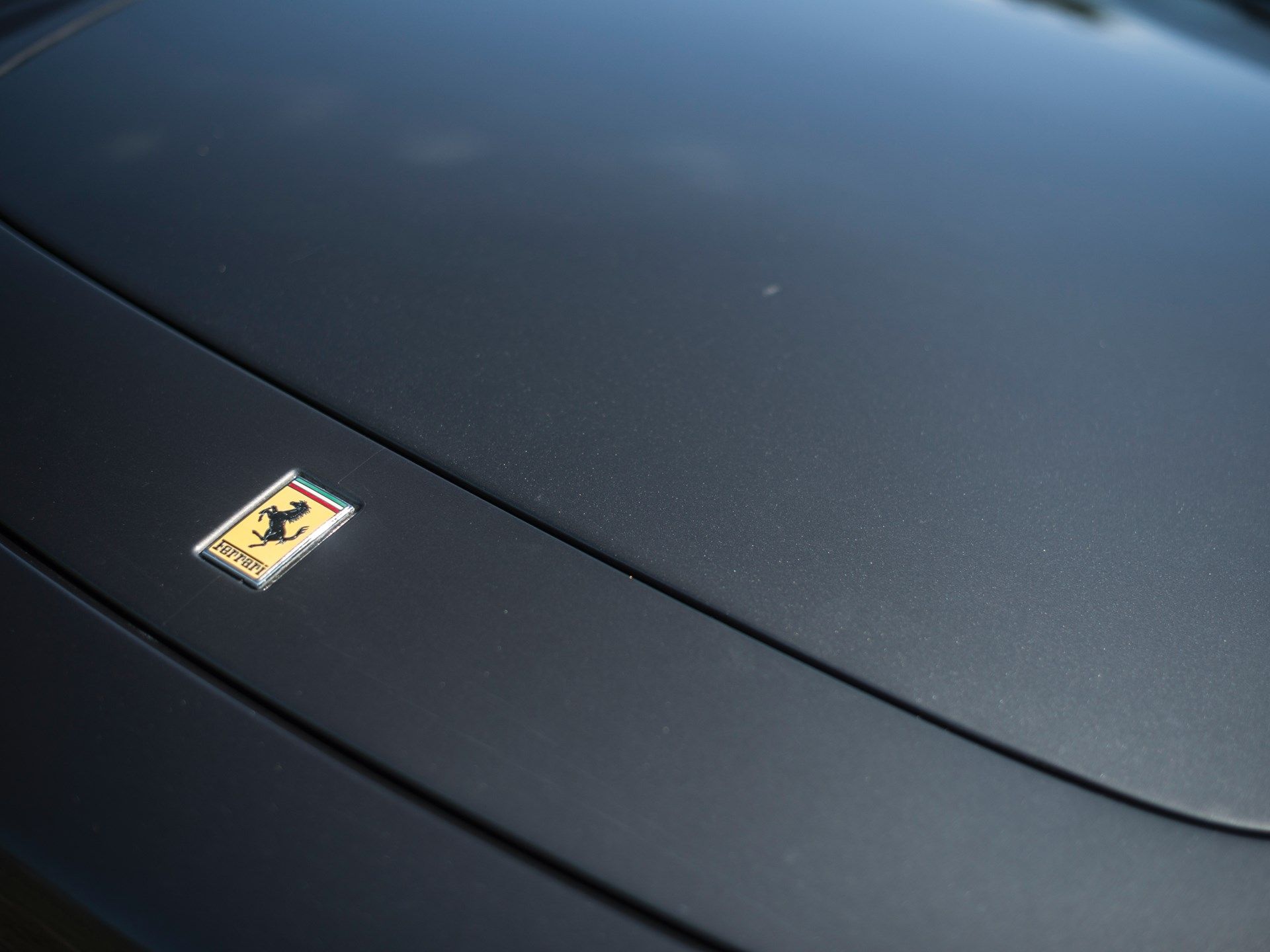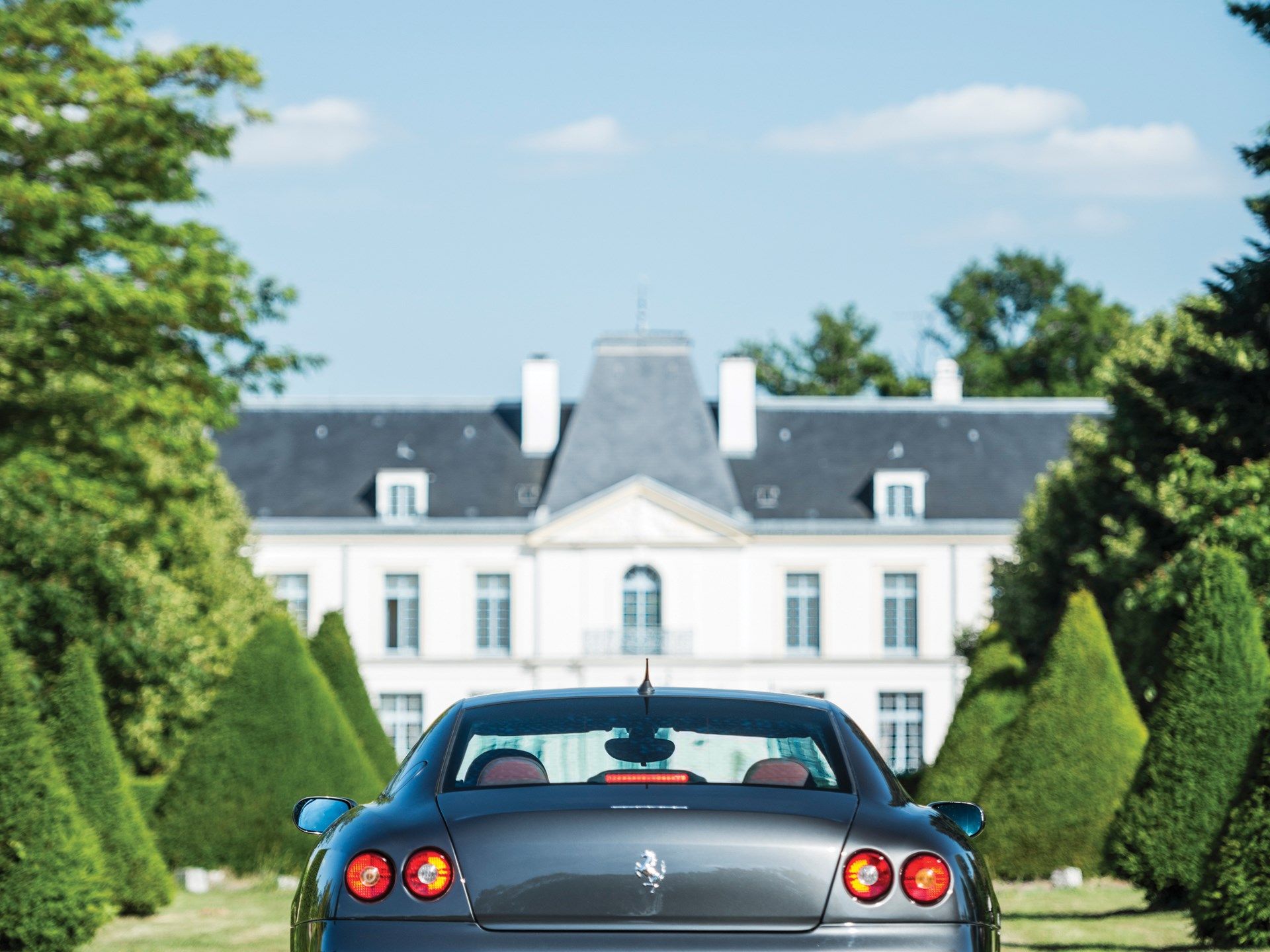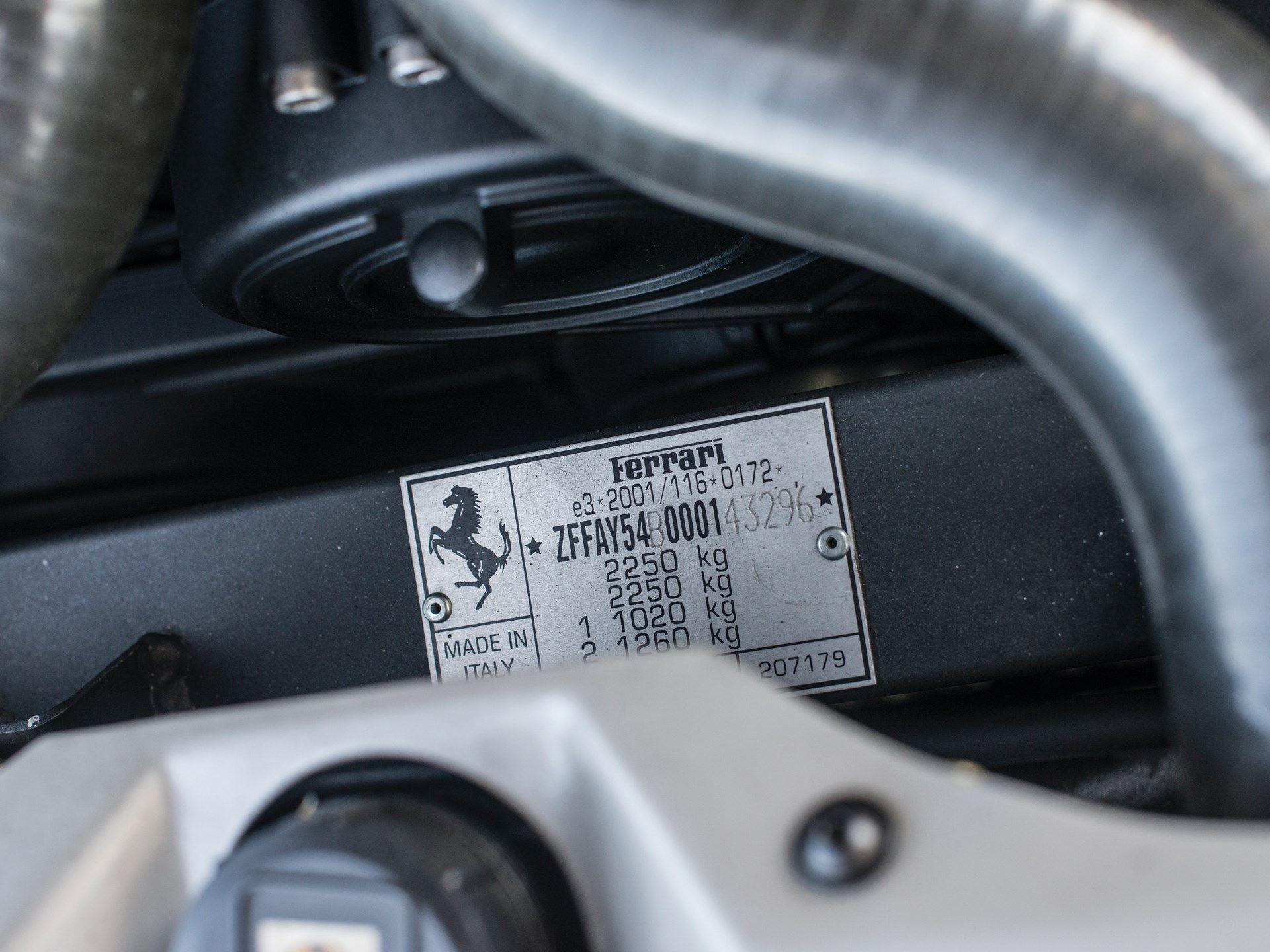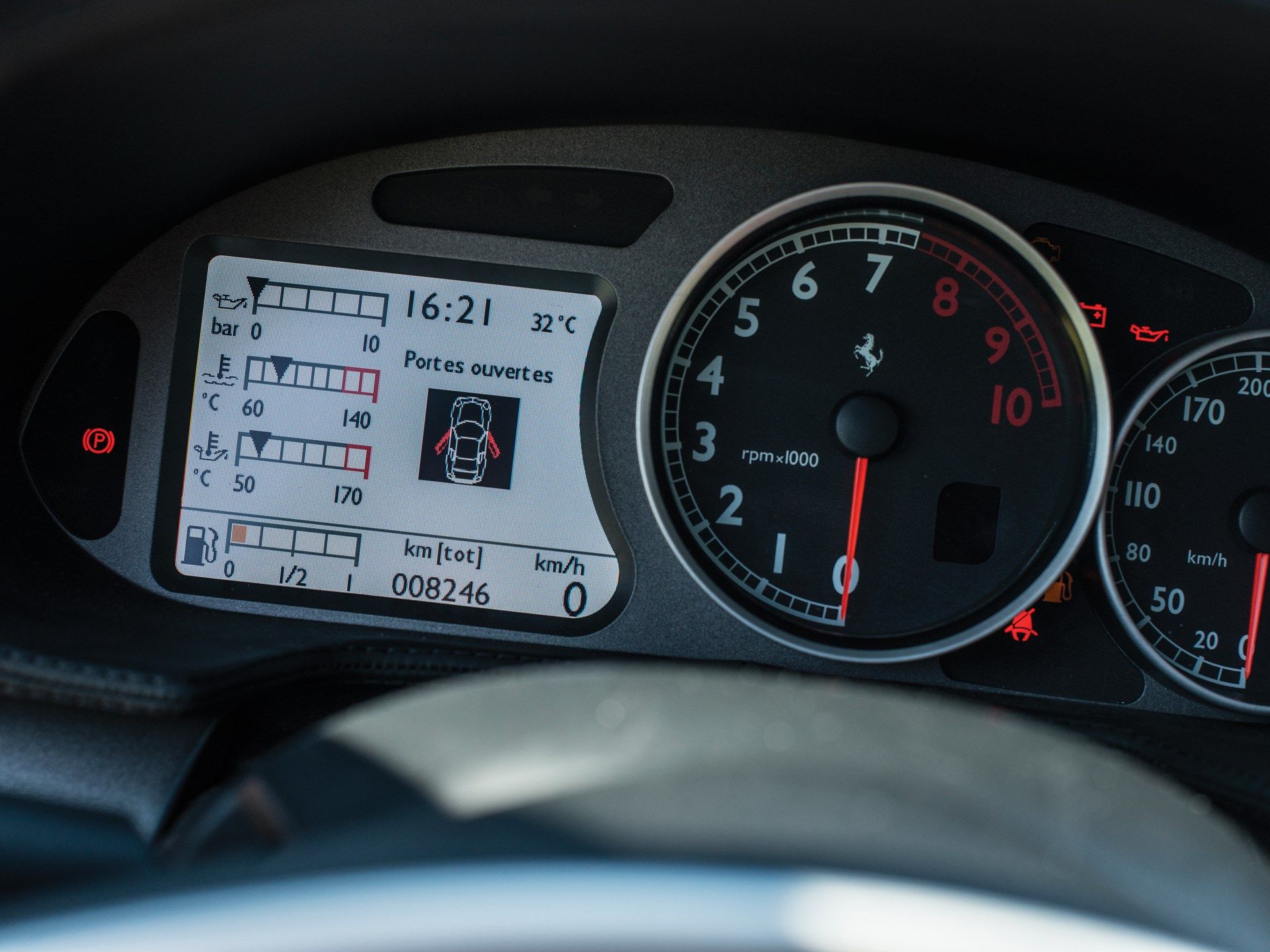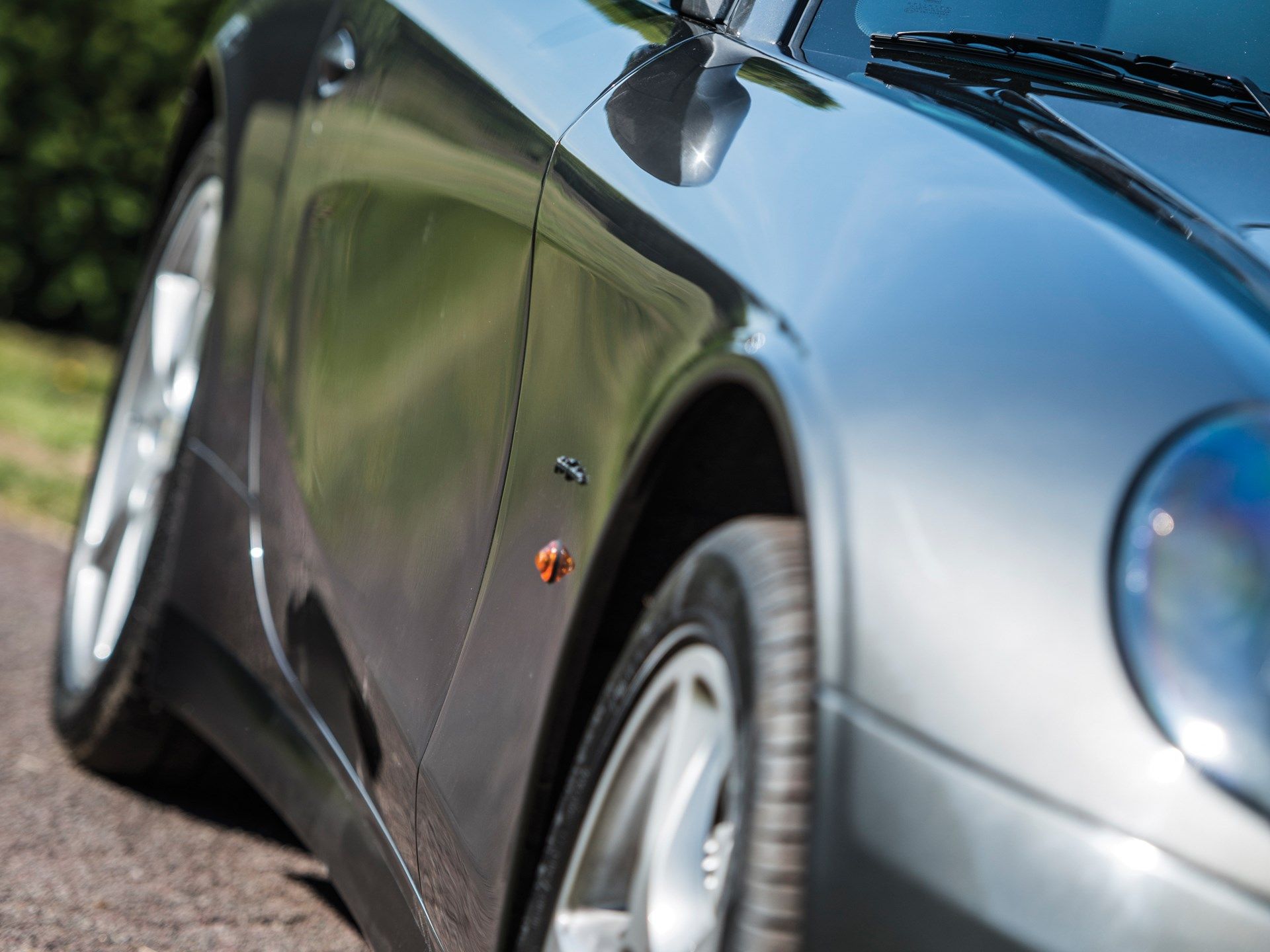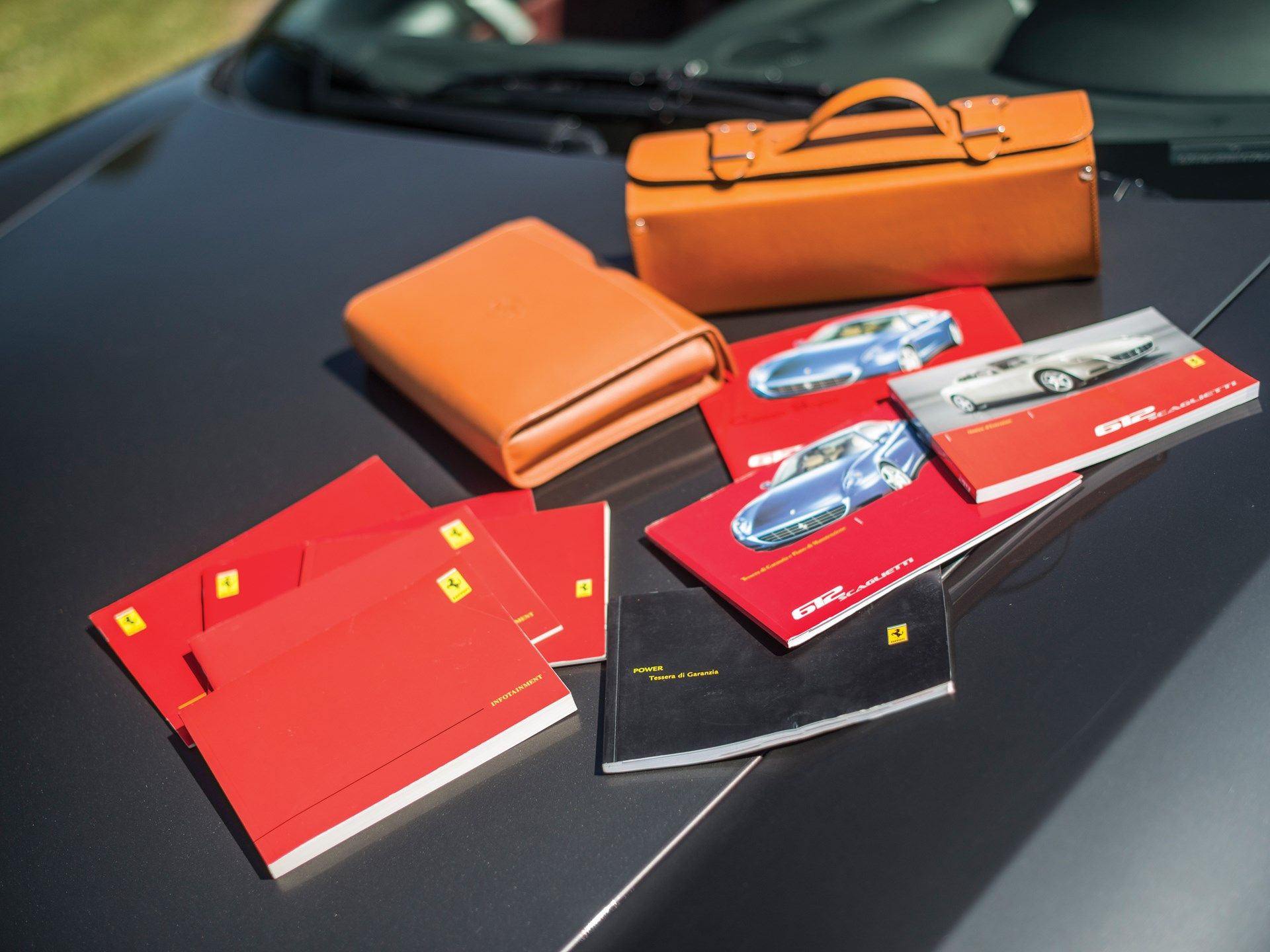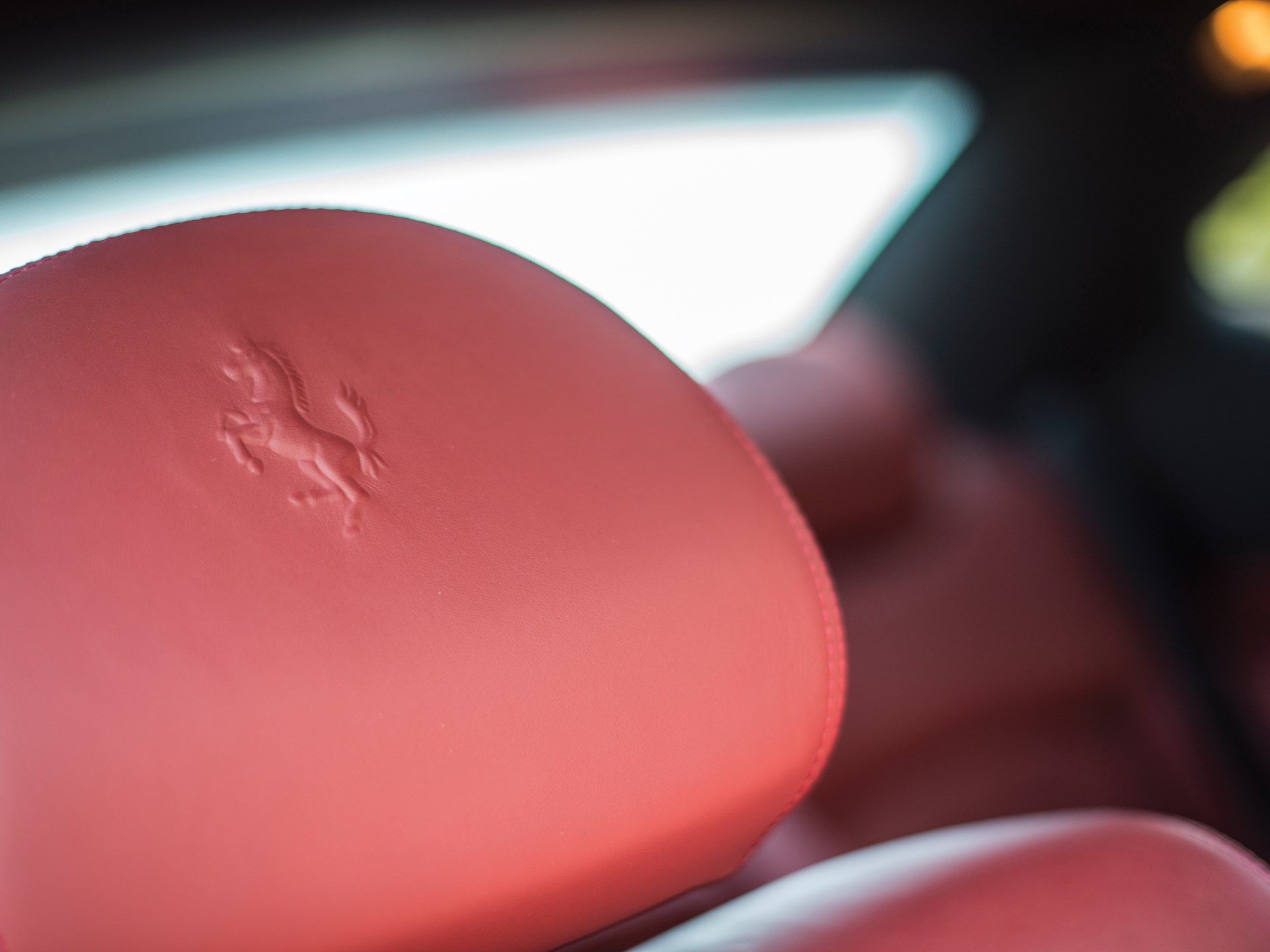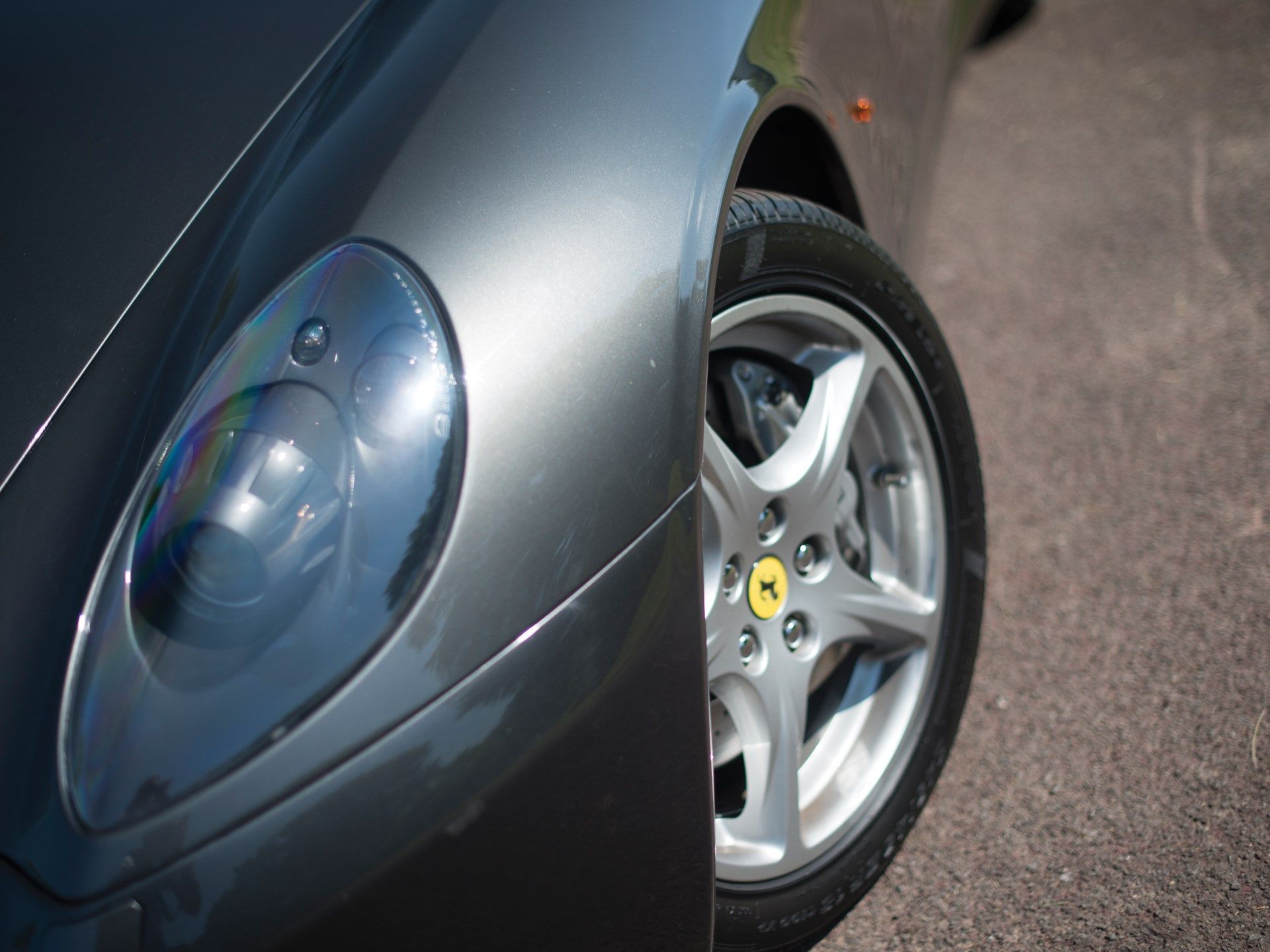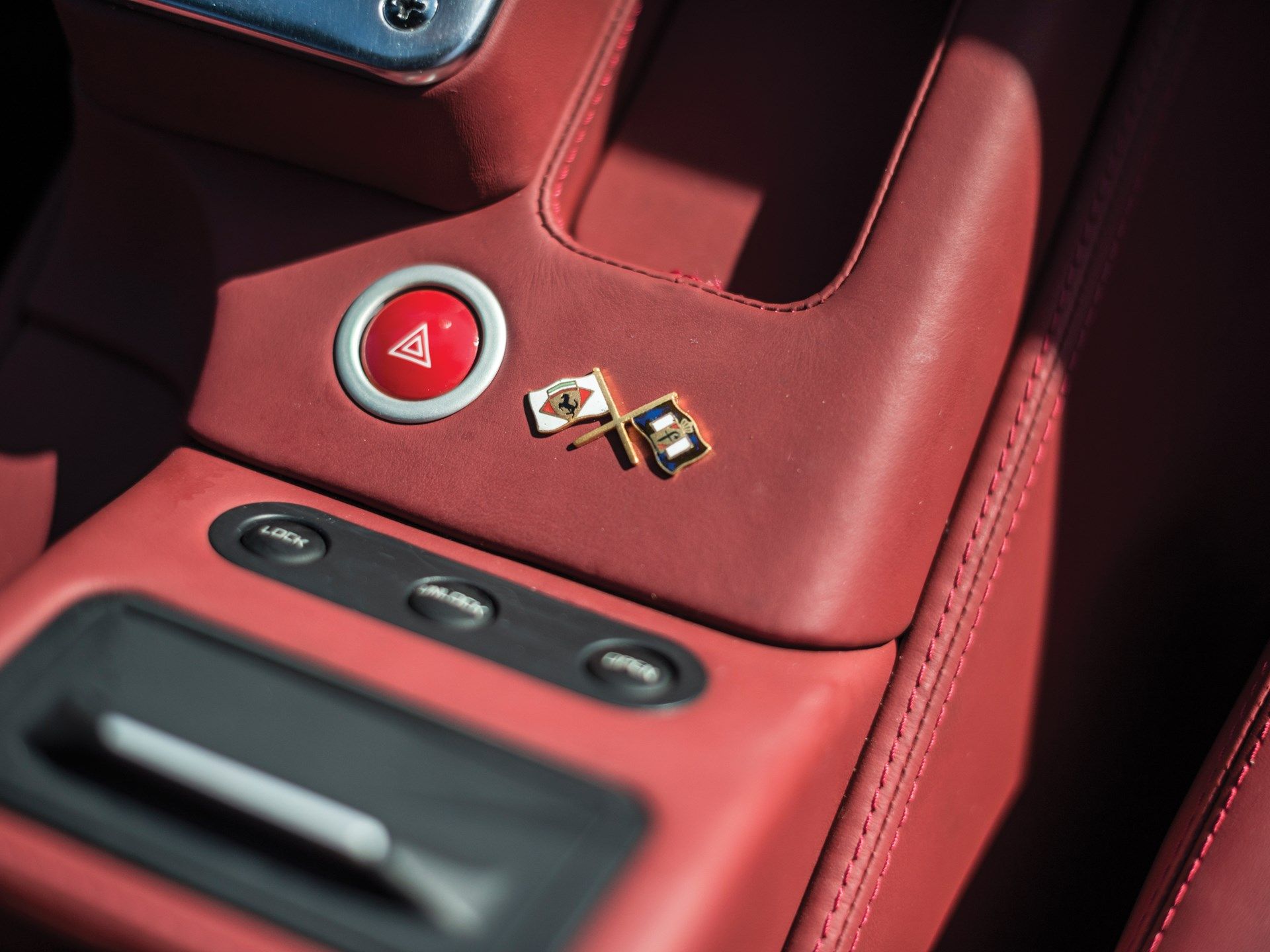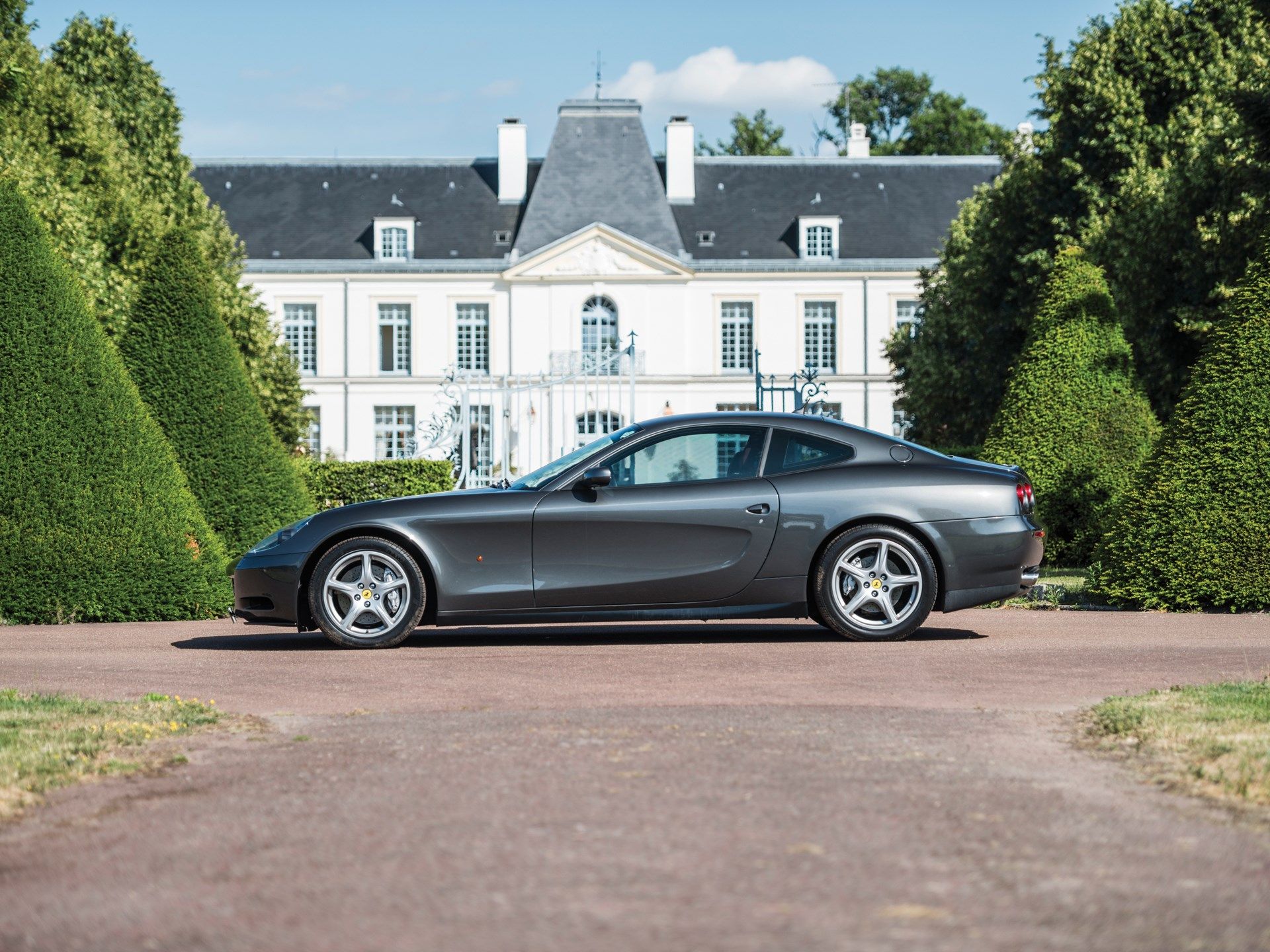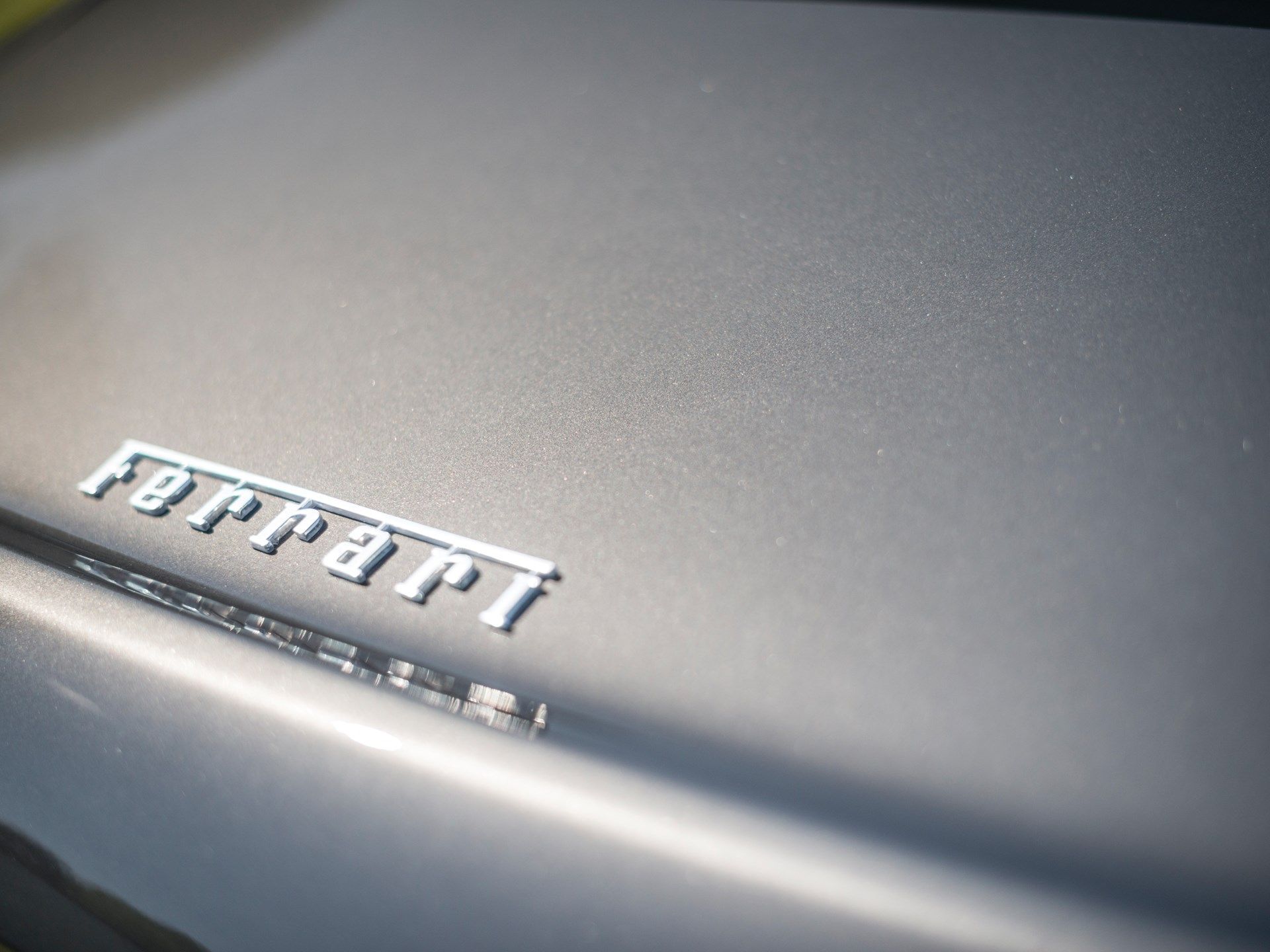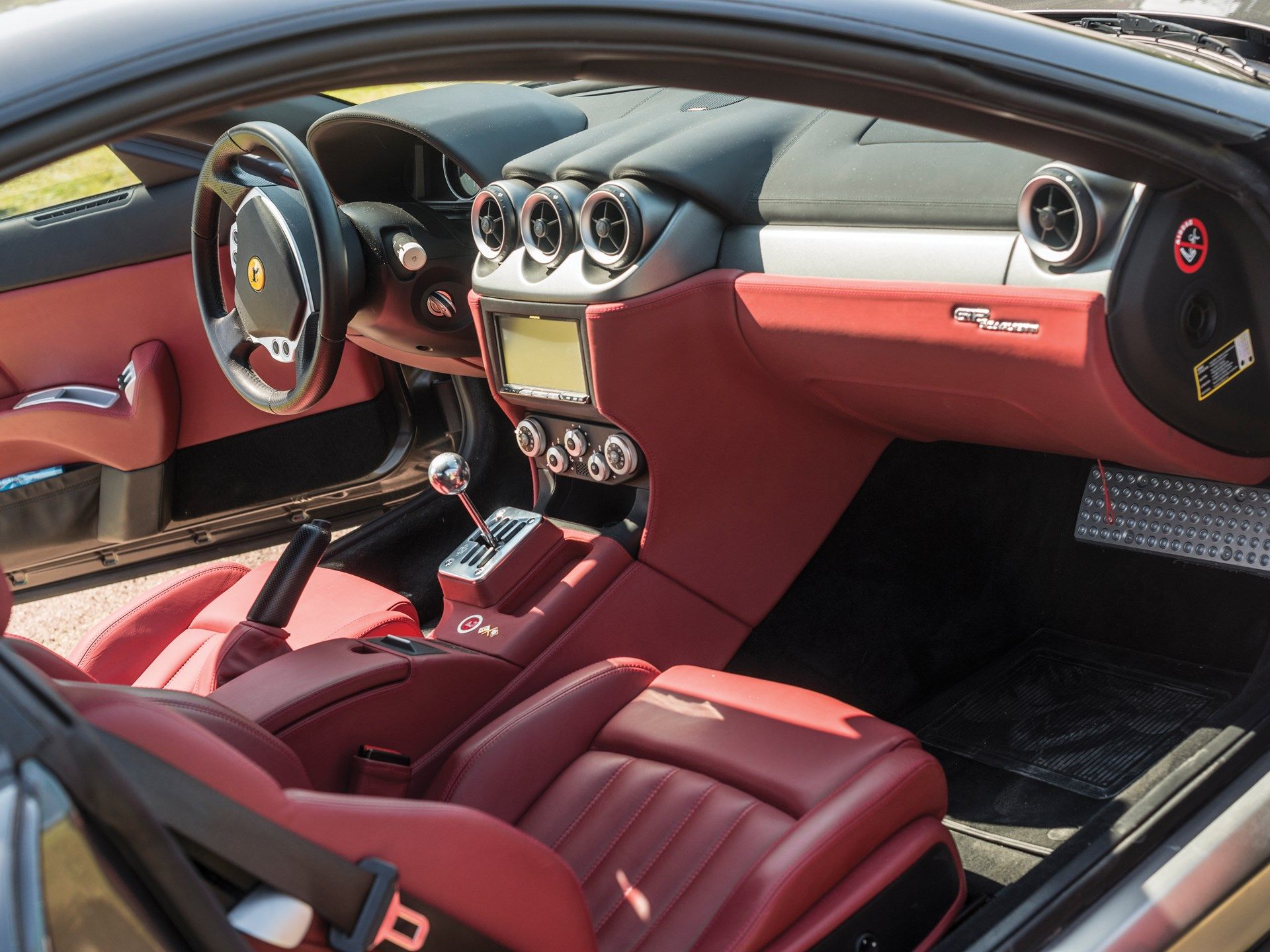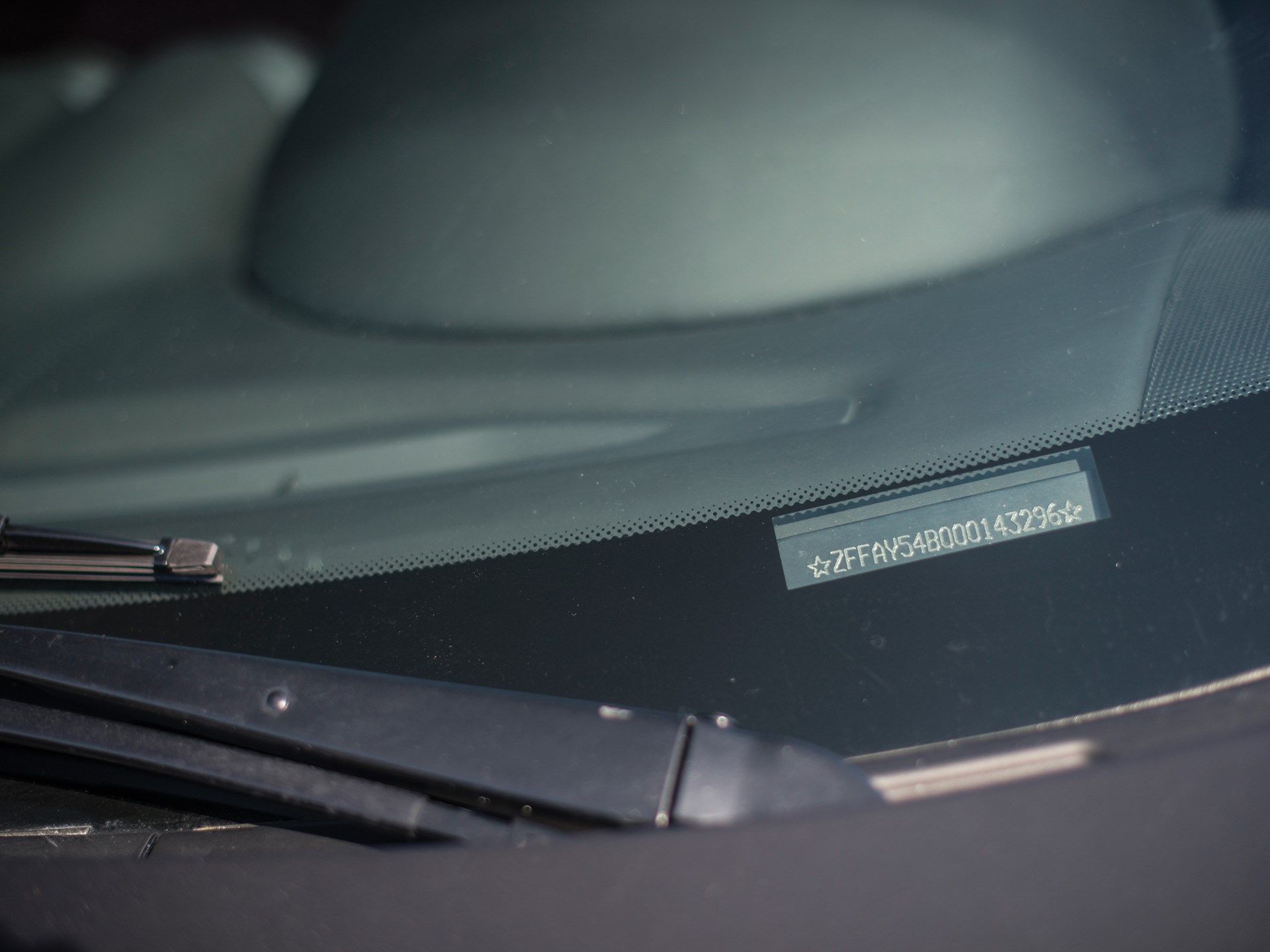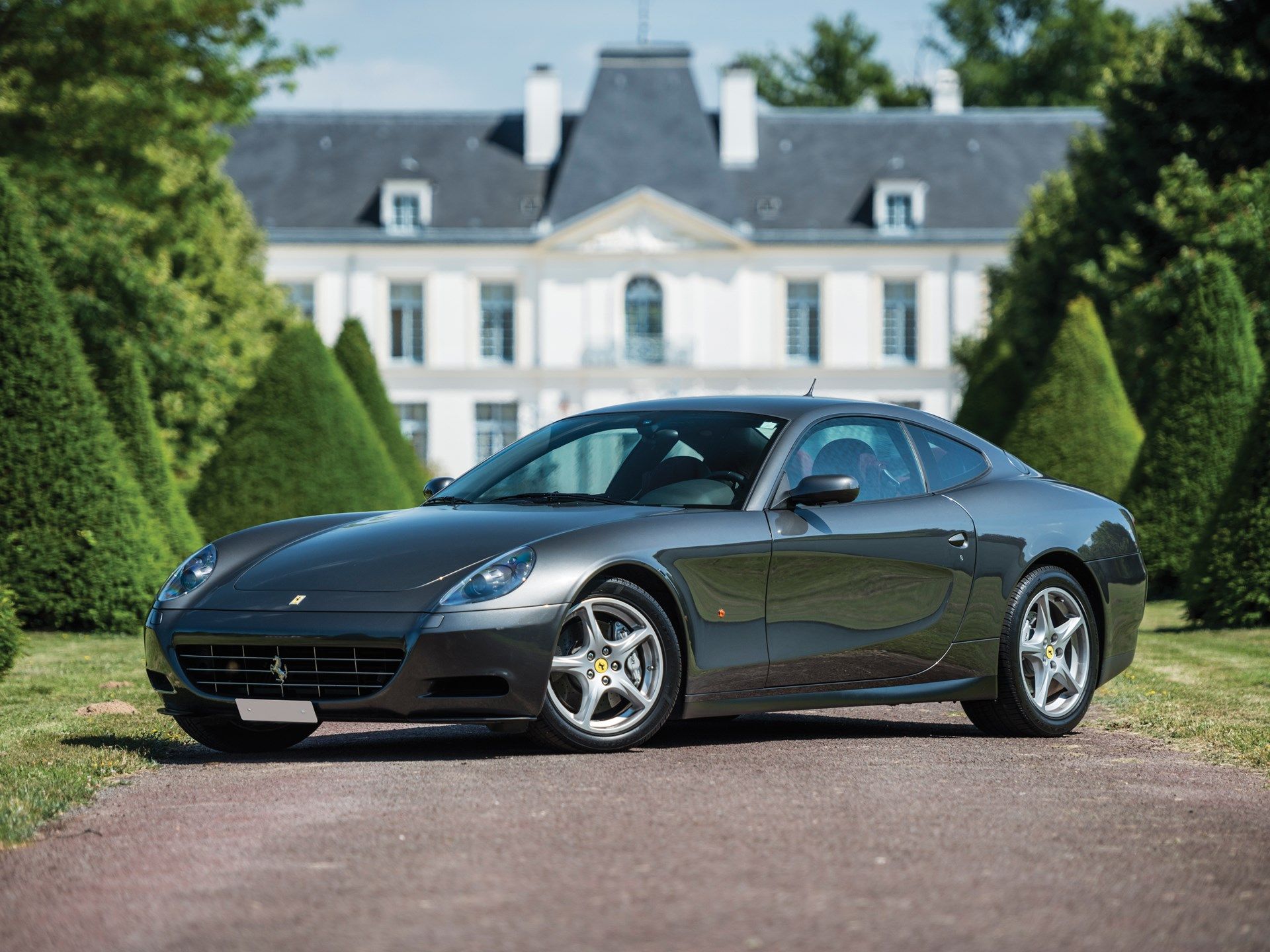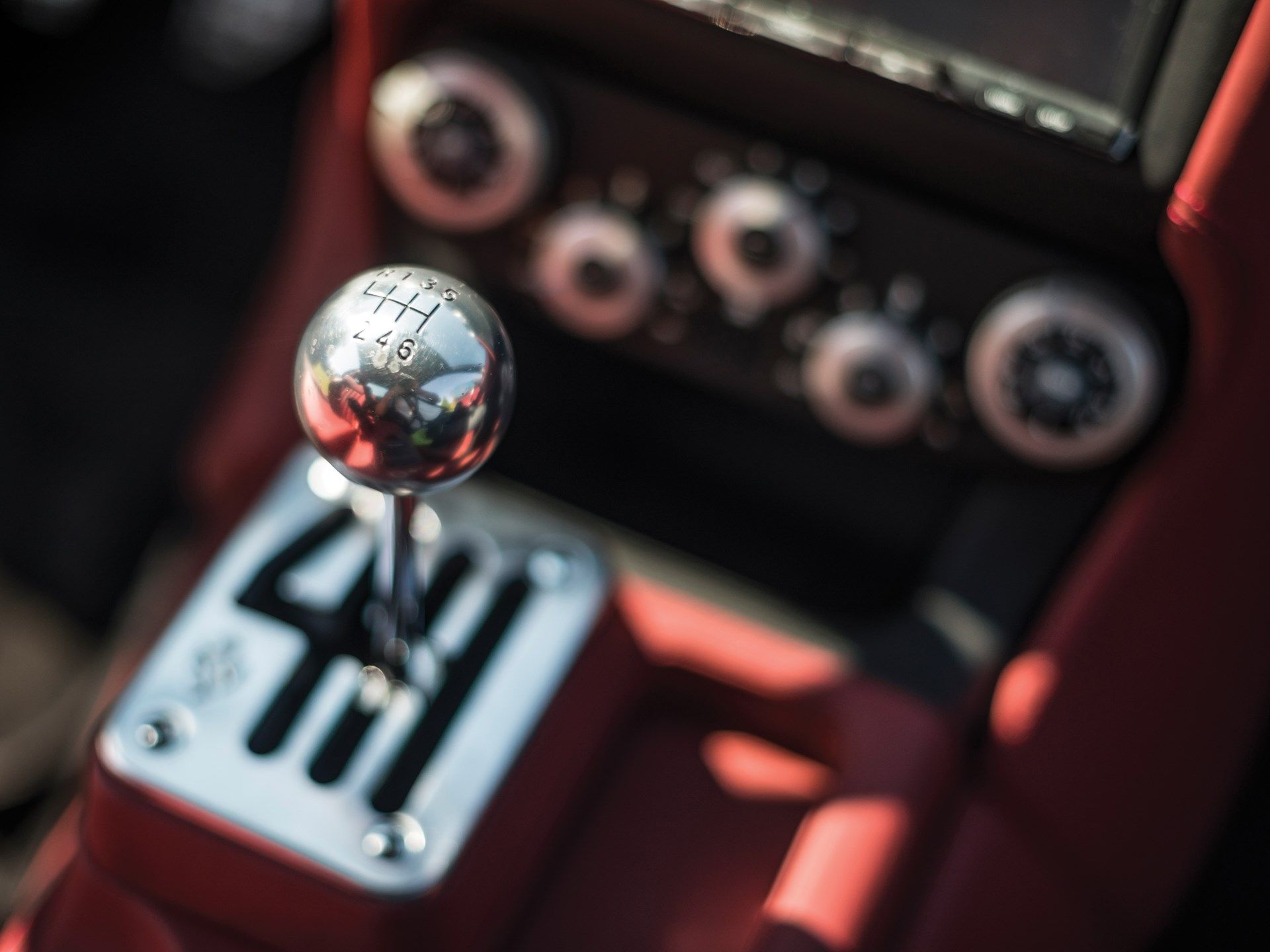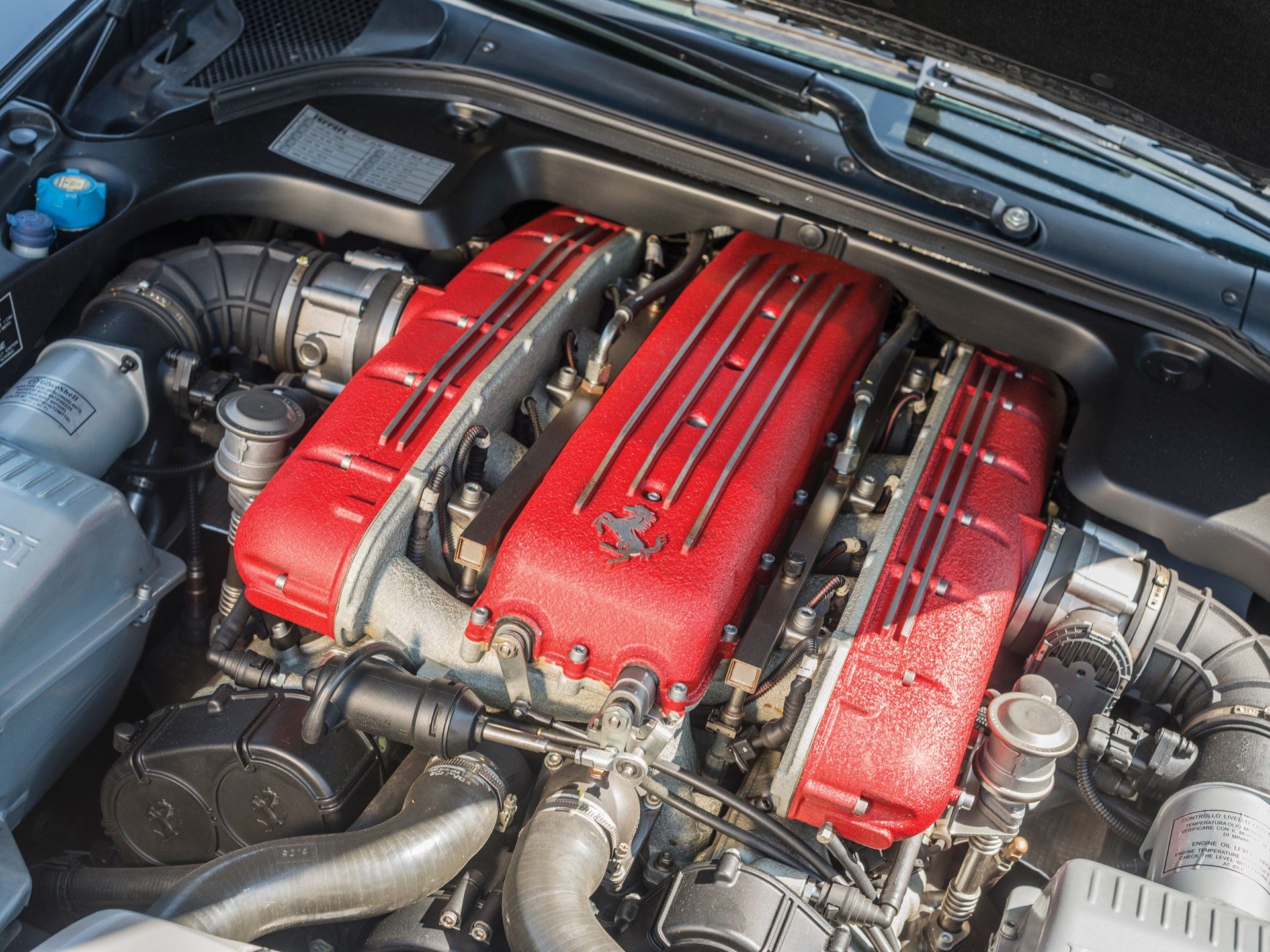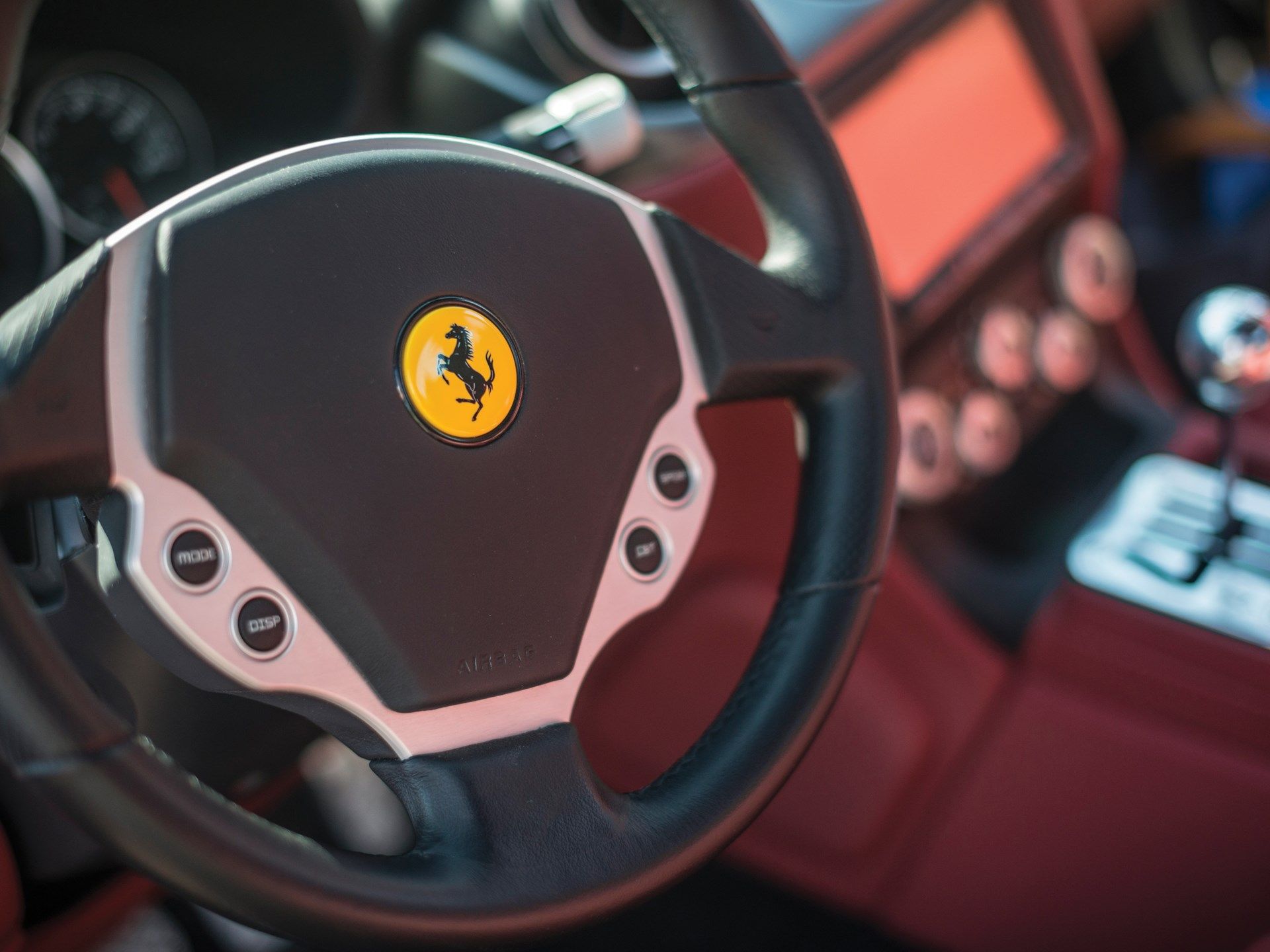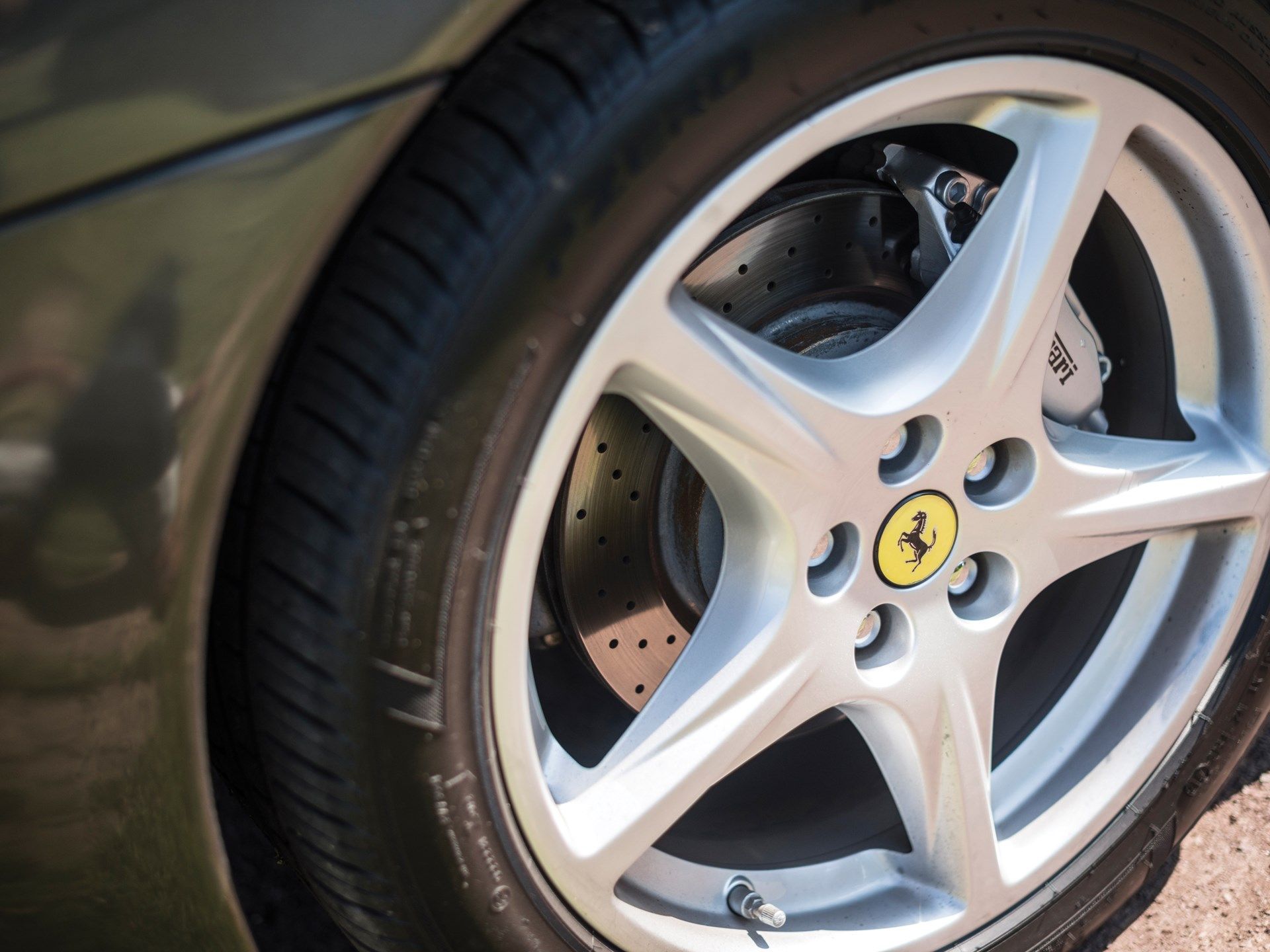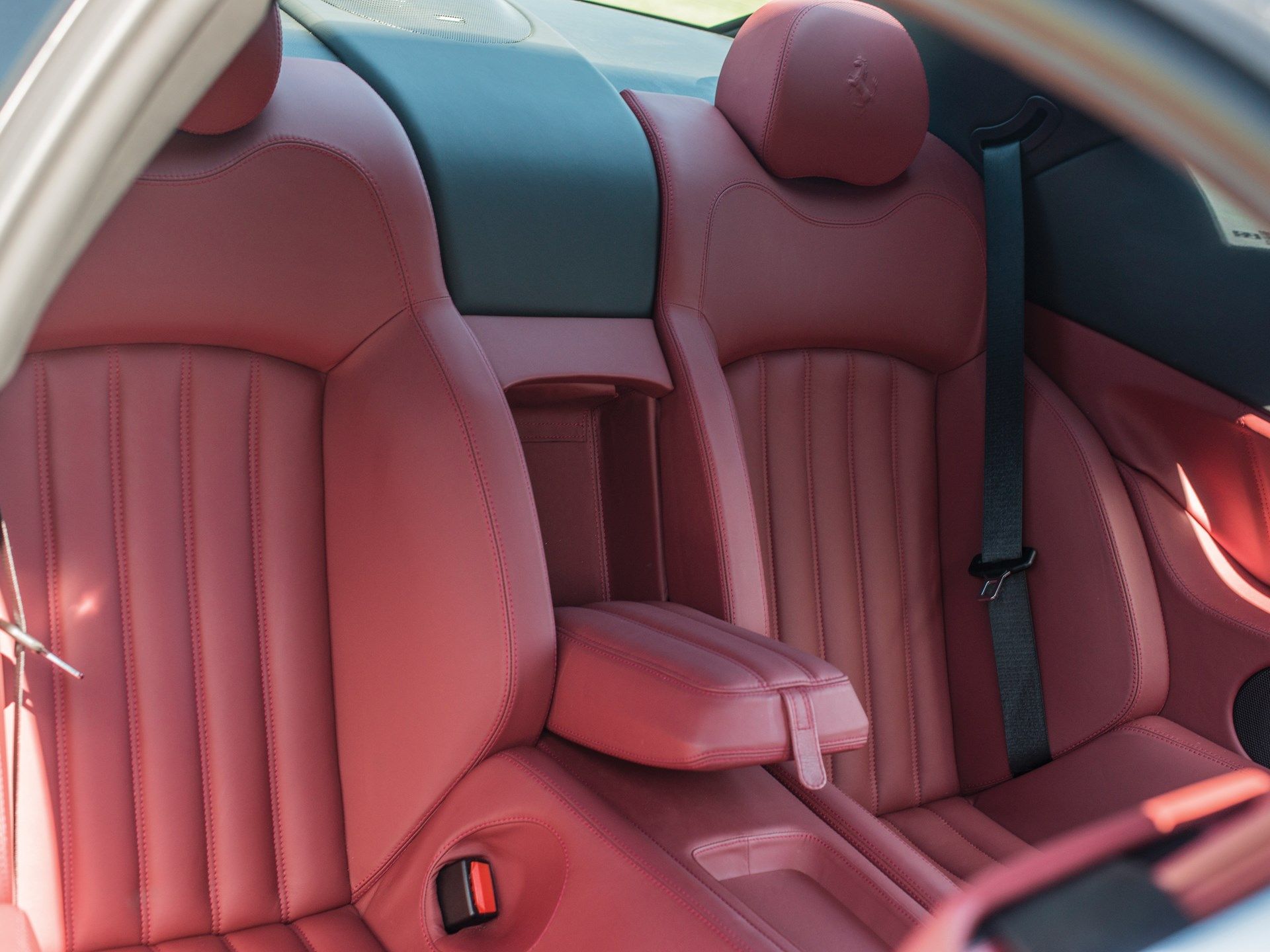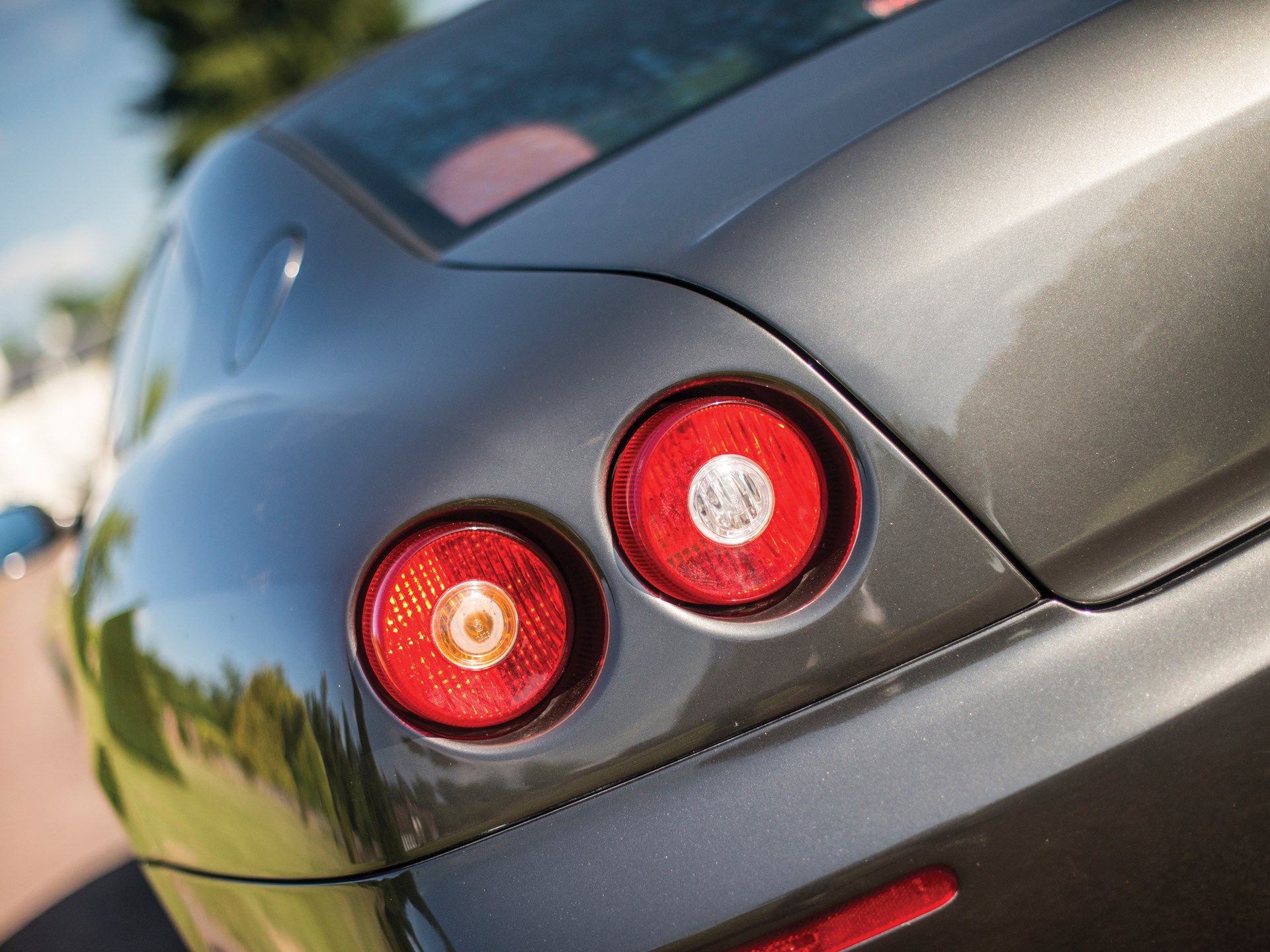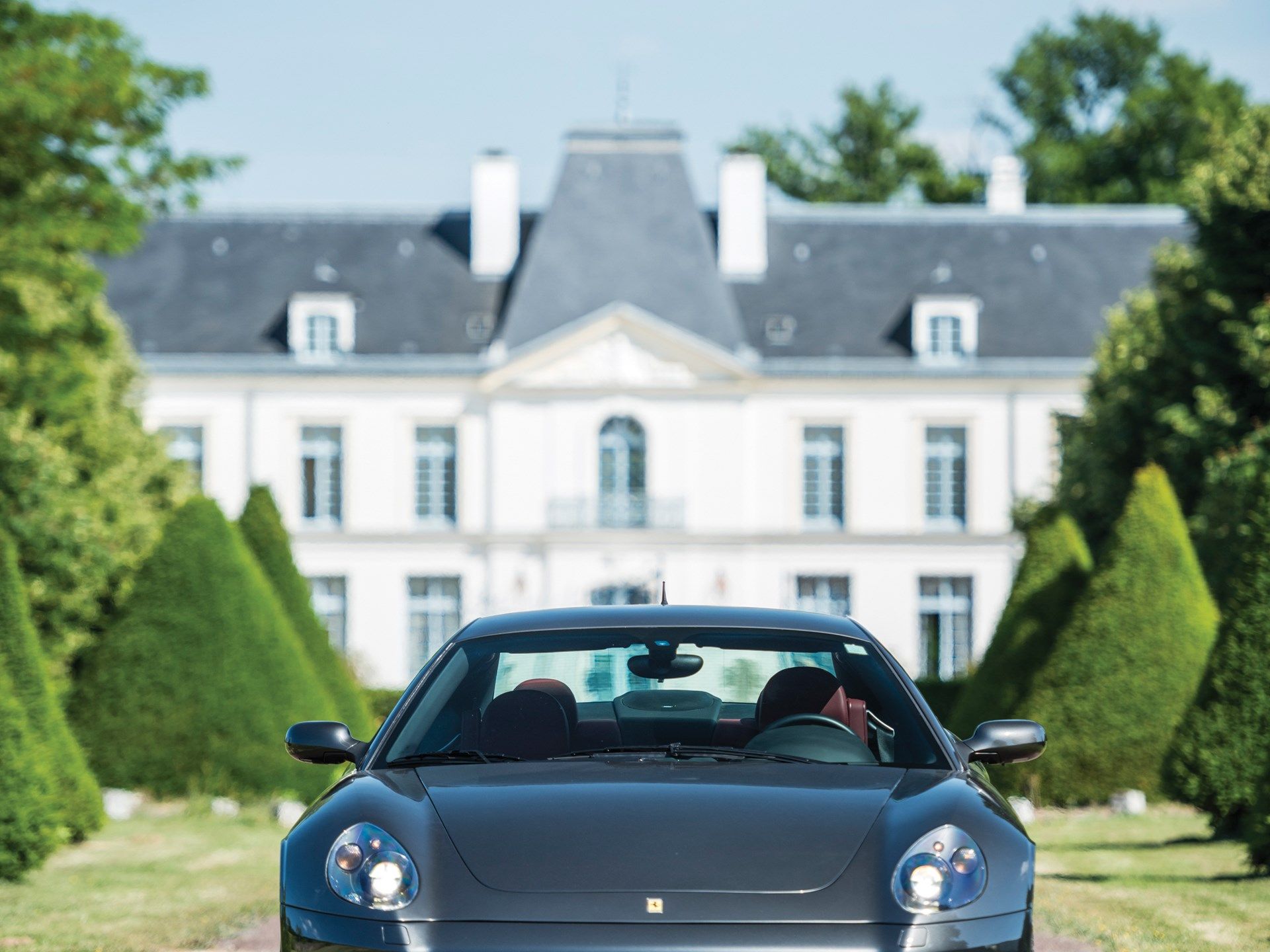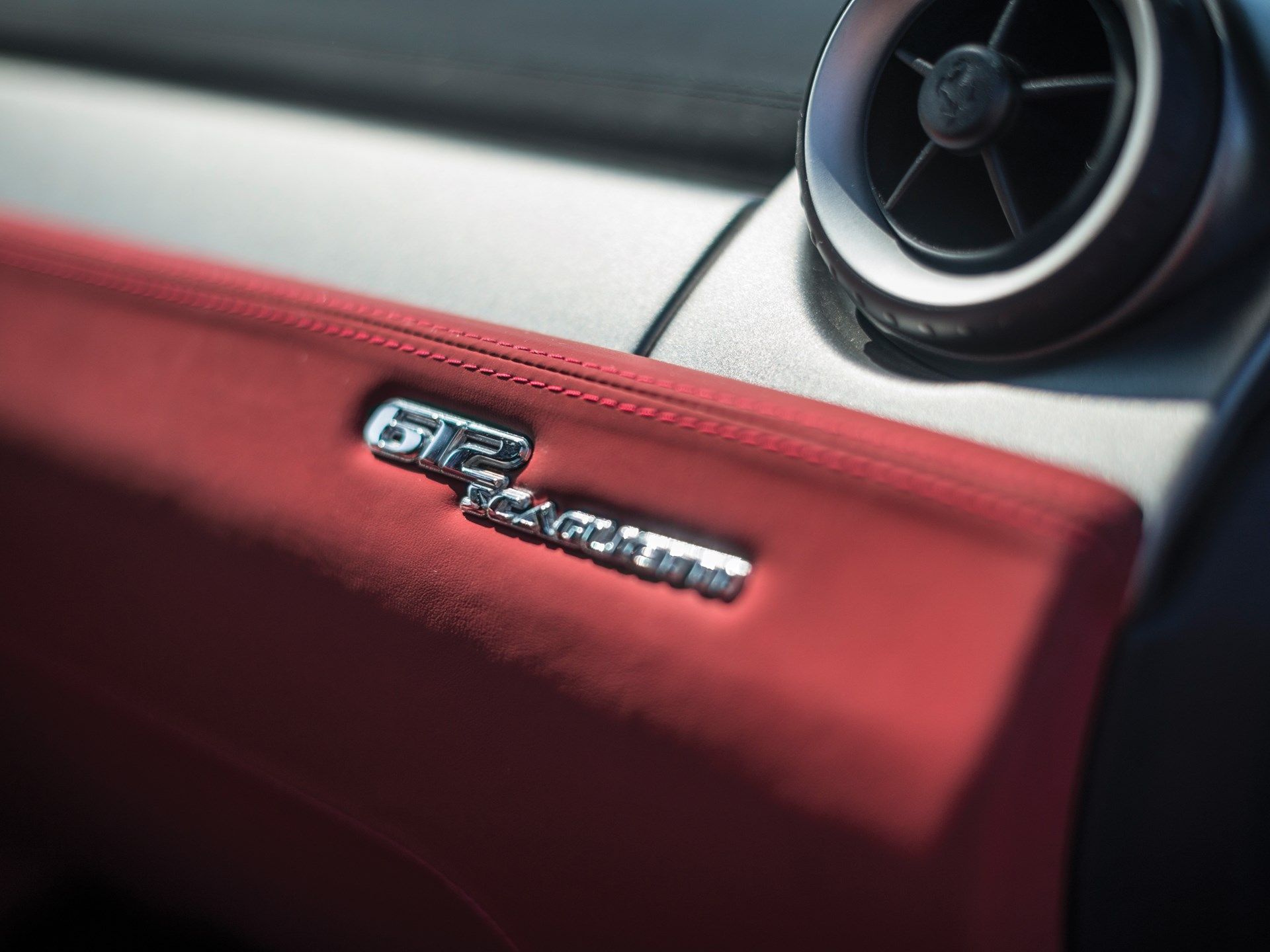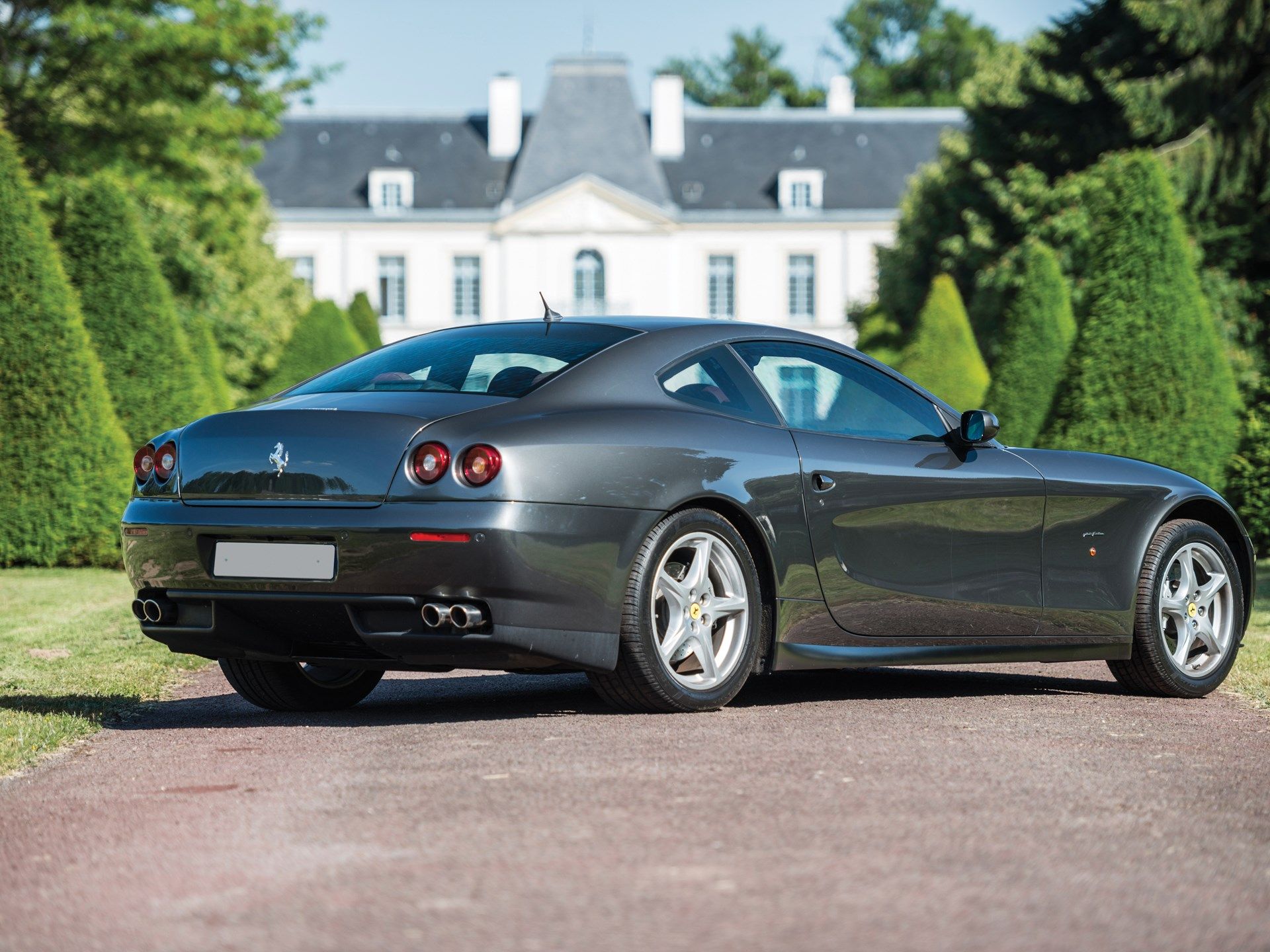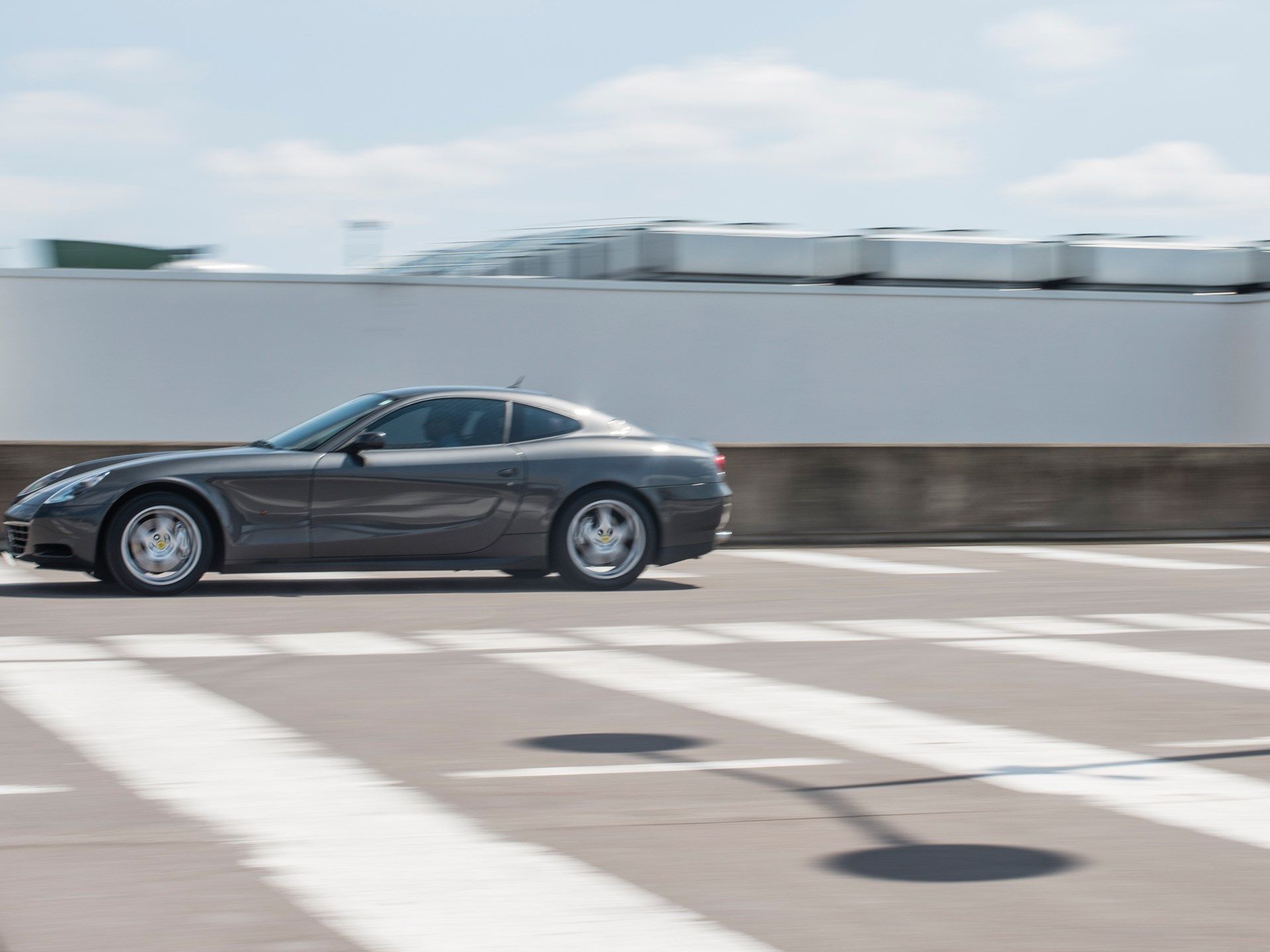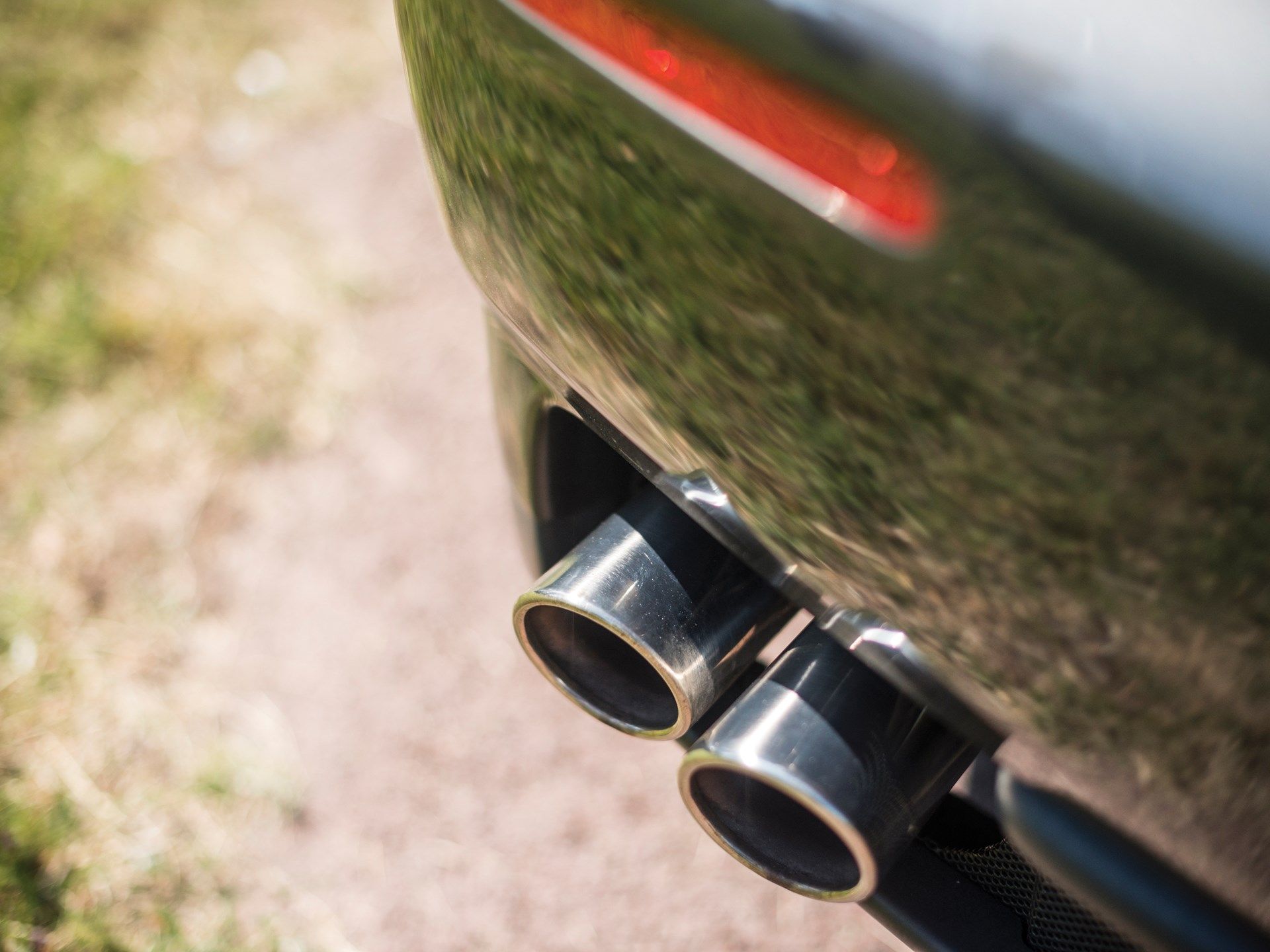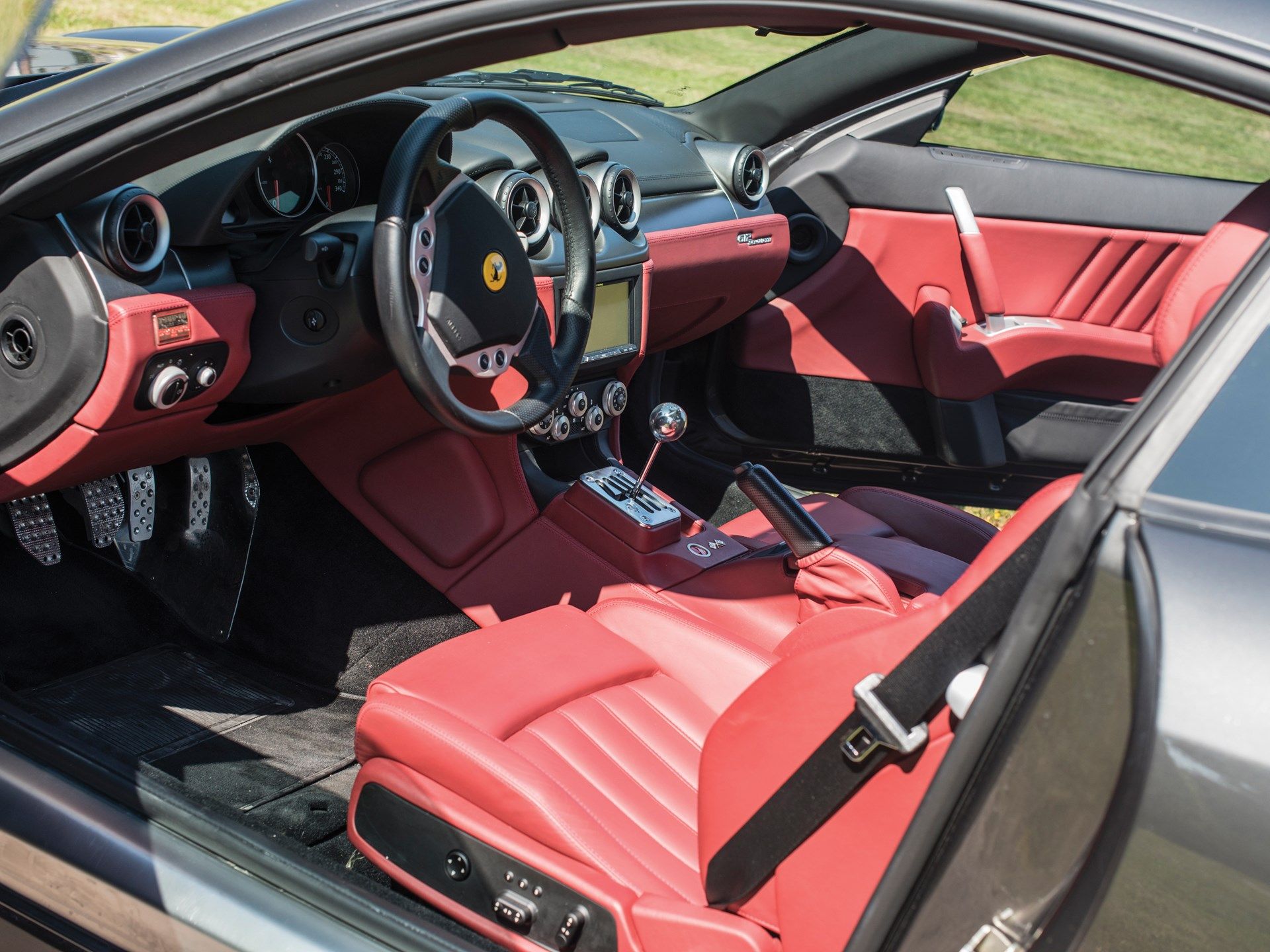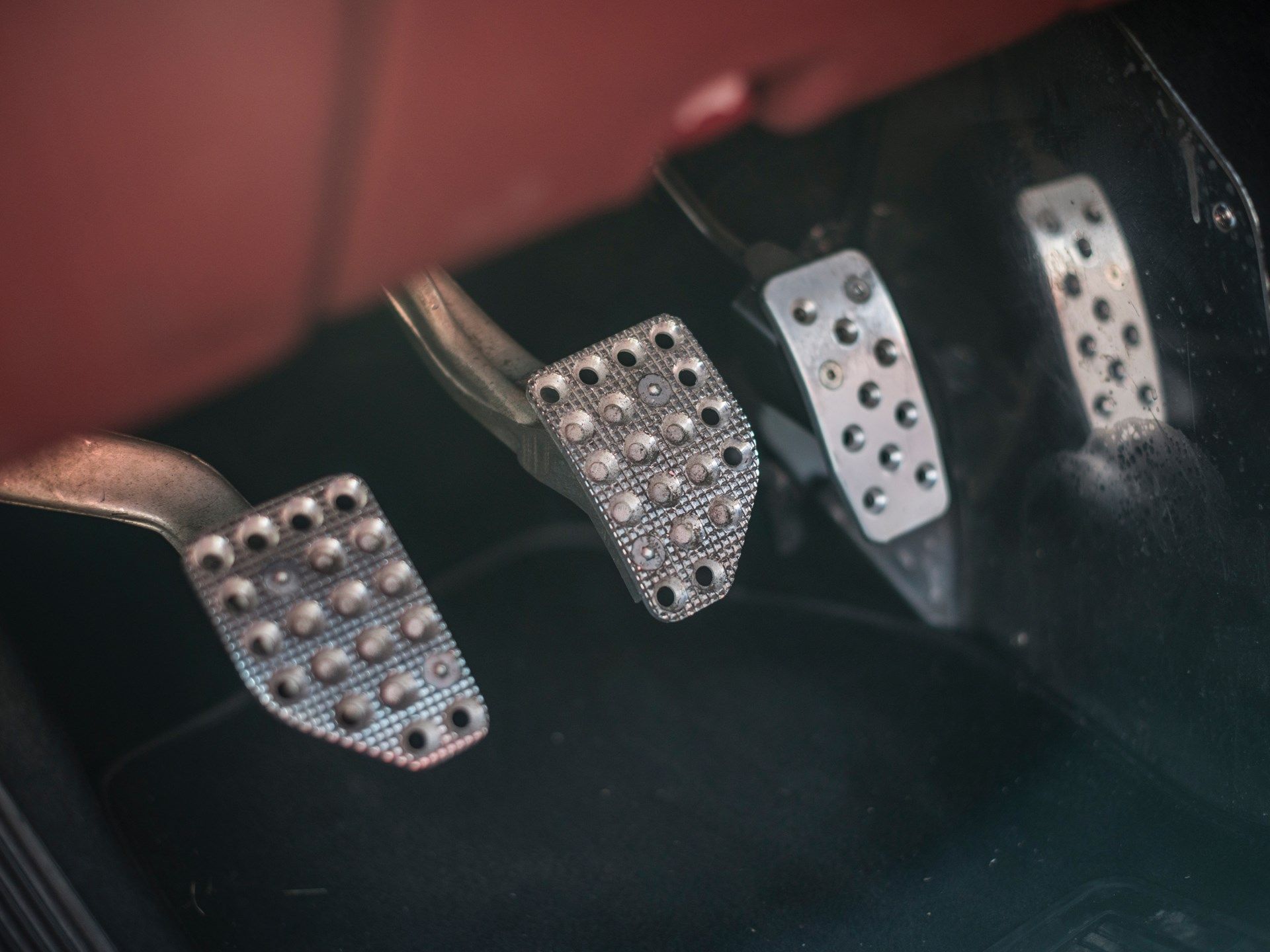In 2003, the Ferrari 456 was discontinued after 11 years in production. The grand tourer, which had been updated to 456M specs in 1998, was then replaced by the 612 Scaglietti. Designed by Ken Okuyama and Frank Stephenson, the 612 Scaglietti was bigger than the 456, and thus it was a true four-seater rather than a 2+2 GT like its predecessor. Named in honor of Sergio Scaglietti, who designed many Ferraris in the 1950s, including the 250 Testa Rossa, the 612 also pays homage to the 375 MM that company director Roberto Rossellini had commissioned for his wife, Ingrid Bergman, in 1954.
Unlike its forerunner, the 612 was an all-aluminum vehicle and the second following the 360 Modena. Developed with Alcoa, the space frame was later used in the 599 GTB. The GT also came with a redesigned engine. While the 456 used a 5.5-liter V-12, the 612 received the larger mill from the 575 Superamerica. While the "612" badge suggests a 6.0-liter engine, the displacement was actually 5.7 liters. Produced at the Carrozzeria Scaglietti plant, the 612 was taken to Maranello to have its interior and V-12 put in. A total of 3025 cars were produced until 2011 when the 612 was replaced by the FF. Ferrari also produced a series of limited-edition model, but more about that in the review below.
2004 - 2011 Ferrari 612 Scaglietti
- Make: Array
- Model: 2004 - 2011 Ferrari 612 Scaglietti
- Engine/Motor: V12
- Horsepower: 533
- Torque: 434
- Transmission: 6-speed automatic
- [do not use] Vehicle Model: Array
Ferrari 612 Scaglietti Exterior
Design-wise, the 612 Scaglietti is a good mix of traditional GT styling and avant-garde design. The vehicle retained the sleek looks of the 456 with the long engine hood and the short deck lid, but these were combined with more organic cues, heavily scalloped side panels, and headlamps integrated into the upper fenders. The latter two features are actually modern interpretations of the 375 MM from the 1950s.
The tall fenders and the lowered engine hood also gave the 612 a unique look. For added aggressiveness, the main grille was enlarged, while the flat vents on the sides gave the GT a wider stance. Onto the sides, the 612 was actually very similar to the 456 save for the big scallop on the front fender and door, but the cabin was reshaped to include a bigger quarter window, while the rear haunches had a more muscular design.
The 612 was felt a bit more massive, being some six-inches longer and having an extra 14 inches added to its wheelbase compared to the 456.
The GT remained familiar around back too, having a similar taillight and bumper layout as the 456. However, while the latter had the round taillights integrated into a red background, the 612 gained individual lights mounted into the body. Ferrari also redesigned the integrated spoiler, which no longer extended above the taillights, covering only the trunk lid portion of the rear. Down below, the quad tailpipes were placed in a similar fashion, but the 612 received a proper diffuser between them, giving the rear fascia a race-inspired design.
All told, the 612 was a natural evolution of the 456 design. While it remained elegant, it became sportier thanks to cleverly placed elements front and rear. Granted, the headlamps were of the "love it or hate it" variety, and many enthusiasts missed the pop-up lights of the 456, but this was one of the main features that made the 612 stand out. And to this day, it remains the only modern Ferrari with such headlamps.
Ferrari 612 Scaglietti Interior
The 612's interior was quite sophisticated for the era, blending premium features with a sporty, race-inspired design. The dashboard looks impressive even for today's standards thanks to its three-tier design that was available in three-tone finishes. The car shown here has a black top, an aluminum center section, and a red bottom area that matches the upholstery on the seats. The aluminum strip in the middle holds four jet-inspired A/C vents, three of which are placed above the center stack. This section also extends away from the dash, helping the center stack separate the driver and passenger compartments.
The steering wheel isn't as crowded as in modern Ferrari, with just a couple of buttons near every side spoke. Behind it, there's an old-school instrument cluster that's pushed deep into the hood. A sizeable display and five knobs make up the center stack, while the center console features a cool shifter with a vintage-looking aluminum case. The automatic models have a much simpler console with buttons.
Both the door panels and the seats are wrapped in leather and double stitching. The craftsmanship was amazing, as on any modern-era Ferrari. The full-grain leather was available in a choice of 12 colors. Other premium features included matching seatbelts, a passenger treadplate, an electrochromic roof, and a surround sound system developed specifically for this car.
This Ferrari may be 15 years old as of 2018, but it can still hold its own, even when compared to brand-new premium vehicles.
Ferrari 612 Scaglietti Drivetrain
The 612 Scaglietti shared its engine with the 575M Maranello, a Berlinetta that Ferrari launched in 2002. The naturally aspirated, 5.7-liter V-12 has the same output, generating 533 horsepower and 434 pound-feet of torque. Two transmissions were offered, a six-speed manual and a six-speed semi-automatic with paddle shifters. The latter was based on the F1 system in the 360, but it was further refined for this model. The manual wasn't very popular, with only 199 out of 3,025 cars being ordered with a row-your-own gearbox.
The 612 offered impressive performance, needing only 4.2 seconds to hit 62 mph from a standing start. Its top speed was rated at 199 mph.
While the automated transmission helped the 612 deliver solid performance, it also had some issues. In 2008, Ferrari recalled some cars because the clutch sensor in the transmission malfunctioned due to heat from the engine, which rendered the car inoperable. Only models from the 2005 to 2007 model years were affected.
Ferrari 612 Scaglietti Pricing
When launched for the 2005 model year, the 612 Scaglietti was priced from $93,500. However, an optioned-up model fetched around $130,000. Pricing increased significantly over the years, to the point where the 612 started from $121,000 in 2008 and from nearly $200,000 in its final year on the market.
The GT is much more affordable in 2018, as value didn't increase as it usually happens with older Ferrari. Low-mileage examples with less than 100,000 miles on the odometer usually cost between $80,000 and $120,000 depending on condition and options. Buying one is fairly easy, as tens of them are looking for new owners in the United States.
Special Editions and One-Offs
While most Ferrari models usually spawn an important number of special editions and one-offs, the 612 Scaglietti soldiered on with just a handful of such versions. More importantly, it didn't get a full-scale production facelift or update.
In 2006, Ferrari launched the Cornes 30th Anniversary Edition, a limited series that commemorated the 30th anniversary of Cornes & Co., the company that imported Ferraris into Japan. The series was restricted to the Japanese market and built in only 20 units. The run included a Blu Cornes exterior color, a carbon-fiber fuel cap, new mesh grille inserts, and the HGTC package, which improved handling.
Also in 2006, Ferrari unveiled the GG50, a concept that celebrated the 50th anniversary of Giorgetto Giugiaro. Unveiled at the Detroit Auto Show, the car didn't make it into production.
Ferrari also used the 612 as a base for the Sessanta, which marked the brand's 60th anniversary in 2007. Limited to 60 units, it featured 19-inch forged aluminum wheels, black chrome exhaust tips, three-position electrochromic glass roof, start/stop ignition button on the steering wheel, a Bose entertainment system and two-tone paint. Only two color combinations were available: Grigio Scuro (dark grey) over Nero (black) with Grigio Scuro sideline and Rubino Micalizzato (ruby red mica) over Nero Daytona (metallic black) with Rubino Micalizzato sideline.
Maranello also built a one-off called 612 Kappa. Designed for Peter S. Kalikow, it features an all-aluminum body, taillights from the Ferrari Enzo, and chrome headlamp bezels.
While the Scaglietti didn't get a production-series facelift, Ferrari did offer an upgrade through its customizing program. Sold under the 612 OTO F1 name, it included the dual-clutch Superfast transmission that was later offered in the 599, the glass electrochromic roof, steering wheel Mannetino, 20-inch Challenge wheels, a sportier exhaust, and carbon-ceramic brakes. The HGT2 package option gave the 612 a sportier suspension too. Less than 50 examples were ordered by customers within the United States.
Competition
Aston Martin Vanquish / DBS
When the 612 arrived in 2003, the Aston Martin Vanquish was one of the most powerful grand tourers on the market. Introduced in 2001, the British GT was updated in 2004, when it became known as the Vanquish S. Visual updates were small, but the 5.9-liter V-12 gained an extra 60 horsepower and 25 pound-feet, with total output set at 520 horses and 425 pound-feet of twist. While marginally less powerful than the 612, the Vanquish S was notably slower, needing 4.8 seconds to hit 62 mph. Top speed was similar at 200 mph. In 2007, Aston Martin redesigned its flagship GT, also renaming it the DBS V12. The 5.9-liter V-12 engine was retained, but power dropped to 510 horsepower and 420 pound-feet.
However, because the car was lighter, it reached 62 mph in 4.3 seconds, only a tenth-second slower than the Scaglietti. On the flip side, top speed decreased to 191 mph with the manual transmission and 183 mph with the automatic. Inside the cabin, both the Vanquish and DBS were very similar to the 612, boasting acres of leather and Alcantara, aluminum trim, and even carbon-fiber surfaces. The Vanquish was a lot more expensive than the 612 though, retailing from in excess of $200,000 back in 2004. The DBS was even more expensive, fetching around $262,000 before options.
Conclusion
The 612 Scaglietti was received with great enthusiasm at launch. Despite being the flagship model with a grand touring purpose, the 612 was just as fun as a full-blown supercar. Of course, it wasn't as comfortable as a luxury grand tourer, but it was a small price to pay for a car that was suitable for long trips, while still displaying incredible skills on the race track. For many, it was the best Ferrari ever. And even though it's been more than a decade since it arrived in showrooms, it remains one of the most appealing grand tourers built in the 20th century.
Further reading
Read more Ferrari news.


